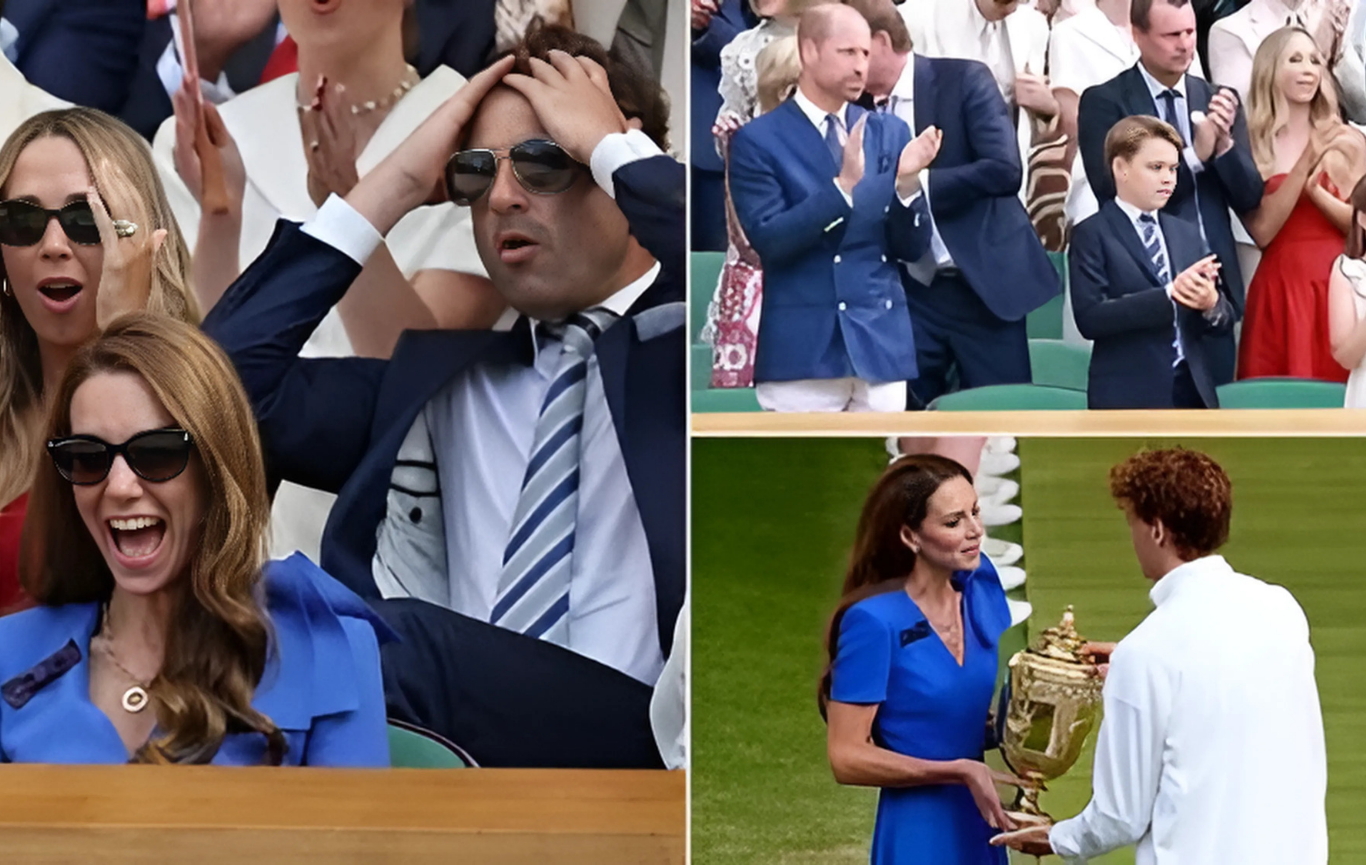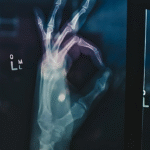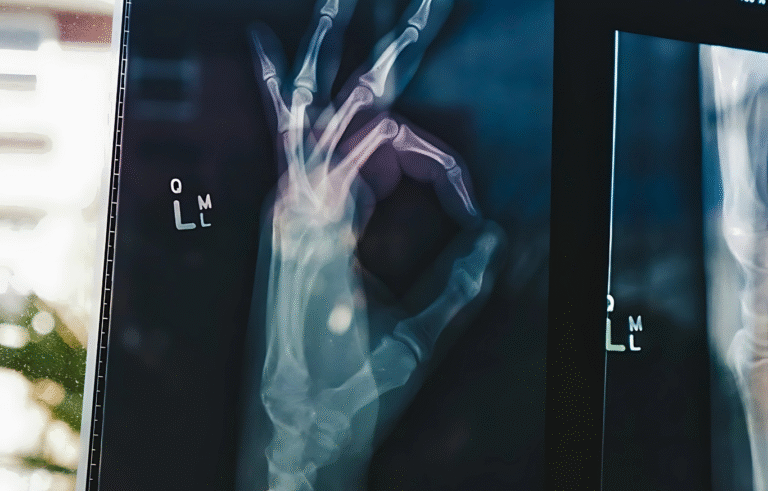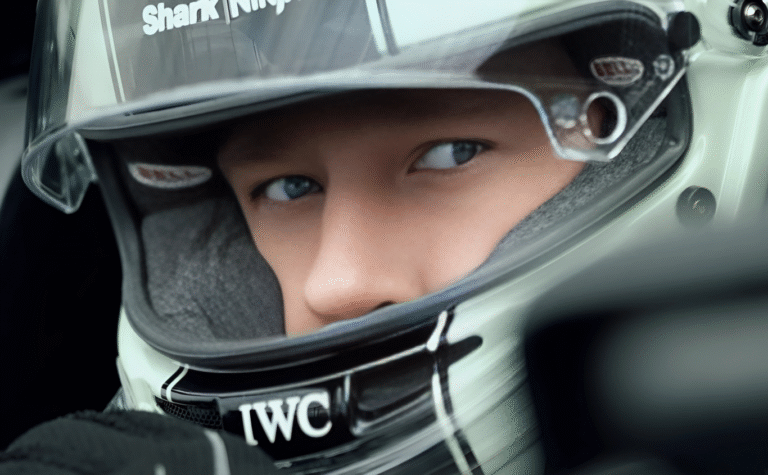
Kate Middleton Ushers in a Bold New Era for the British Monarchy at Wimbledon
A Royal Appearance That Broke with Tradition
In a striking moment that may redefine public perceptions of the modern British monarchy, Kate Middleton, the Princess of Wales, made a commanding appearance at the Wimbledon men’s finals, not only captivating the crowd with her presence but also subtly challenging long-held royal traditions. Attending for the second consecutive day, Kate brought along Prince William, Prince George, and Princess Charlotte, signaling an era of familial solidarity and mutual respect within the Royal Family.
Where previous royal appearances at major public events followed rigid hierarchical codes, Kate’s confident demeanor and leadership role at Wimbledon revealed a deliberate role-reversal that could shape the monarchy’s future.
A Confident Princess Takes Center Stage
Kate Middleton’s cobalt blue dress was more than a fashion statement—it symbolized authority, elegance, and approachability. As patron of the All England Lawn Tennis Club (AELTC) since 2016, the Princess was entirely in her element, mingling seamlessly with dignitaries, tournament organizers, and fans.
She led the family through the All England Club with unmistakable poise, engaging in lively conversations and making formal introductions, all while exuding warmth and grace. Observers noted how Kate was not only the face of the Royal Family on this occasion—she was the orchestrator of it.
Prince William in a Supporting Role
Perhaps most telling was Prince William’s body language, as analyzed by expert Judi James. In stark contrast to the historically dominant role played by royal men, William appeared entirely content in a supportive position, standing slightly behind Kate with Prince George and Princess Charlotte at his side.
His tailored blazer, coordinated tie, and pocket square weren’t just sartorial choices—they were interpreted as a homage to Kate and the event itself. This subtle but powerful gesture of respect underscored a progressive dynamic in royal representation. Judi observed that William’s “compliant and proud” stance demonstrated humility and admiration for his wife, a stark departure from rigid royal protocols of the past.
A Defining Moment for Prince George and Princess Charlotte
The presence of Prince George, 11, and Princess Charlotte, 10, was not incidental. Dressed impeccably, the young royals were introduced to key figures at the tournament, absorbing the responsibilities and pageantry that come with their positions. But unlike earlier generations, they witnessed a version of royal duty grounded in equality and mutual respect, rather than deference to a rigid chain of command.
Kate’s role as a guide and mentor was evident. As she explained procedures and introduced the children to officials, she embodied both maternal care and royal dignity. This deliberate exposure to public life in such a measured and supportive context is a masterstroke in modern royal upbringing.
Wimbledon: Kate’s Stage, Her Legacy
Saturday’s solo appearance by Kate at the women’s final, where she presented the trophy and wore her traditional Wimbledon bow brooch, reinforced her commitment to royal tradition balanced with personal authenticity. It marked continuity in her role as a patron, yet Sunday’s family appearance redefined how that patronage can evolve to reflect modern values.
Judi James further commented on this shift, noting that “Kate’s event” was an emblem of how public royal engagements can become collaborative, familial, and led by merit rather than title. William, walking behind and letting her take the spotlight, epitomized the supportive partner, redefining what it means to be a royal consort in the 21st century.
Kate Middleton’s Leadership Style and Public Impact
Kate’s performance at Wimbledon wasn’t a one-off display of charm—it was the culmination of years of building a distinct royal brand grounded in relatability, competence, and strength. From mental health campaigns to early childhood education and now as a leading royal patron, Kate has cultivated a role not dependent on William’s status but on her credibility and dedication.
At Wimbledon, this was unmistakable. Her firm handshakes, direct eye contact, and warm laughter painted a picture of a royal figure ready to take the institution into a new chapter—one where women can lead not by exception but by example.
Redefining Monarchy Through Symbolism and Action
Every detail at the men’s final was imbued with meaning—from the seating arrangement to the choreography of interactions. These were not coincidences but calculated moves to reframe how the monarchy is perceived and functions. Kate didn’t just attend Wimbledon—she owned it. William didn’t just accompany her—he uplifted her.
Their children didn’t just watch—they participated. This symbolic passing of the torch, not from monarch to monarch, but from tradition to progress, sets a powerful precedent for future royal engagements.
Public Response and Media Narratives
The reaction to Kate’s visible leadership has been overwhelmingly positive. Social media, significant publications, and royal watchers alike have praised her assertiveness and the family’s cohesive public image. Unlike previous generations, who were often bound by protocol, the Prince and Princess of Wales are crafting a narrative of accessibility, mutual respect, and shared responsibility.
Such moments are not just photo ops—they are defining visual records of an institution in transformation. Judi James’ analysis struck a chord because it articulated what many observers felt instinctively: that this was more than a day at Wimbledon—it was a signal to the world.
A Monarchy Poised for Modernization
Kate Middleton’s leadership at Wimbledon was a masterclass in modern monarchy. Through subtle cues and overt actions, she demonstrated that royalty in the 21st century can be grounded in partnership, emotional intelligence, and public service, without abandoning tradition, but indeed transforming it.
Her poised yet commanding presence, complemented by William’s supportive stance and the children’s active participation, laid bare the shifting dynamics within the Royal Family. In doing so, Kate has not only cemented her role as a future queen consort but as a trailblazer redefining what that title truly means.









